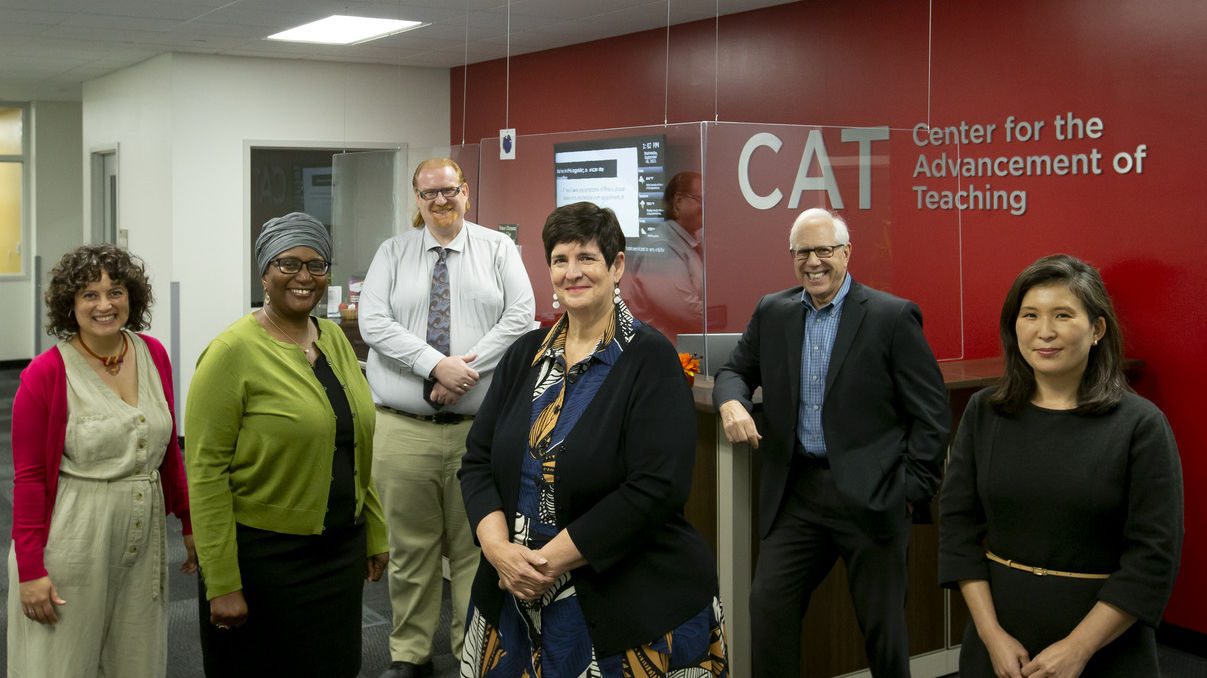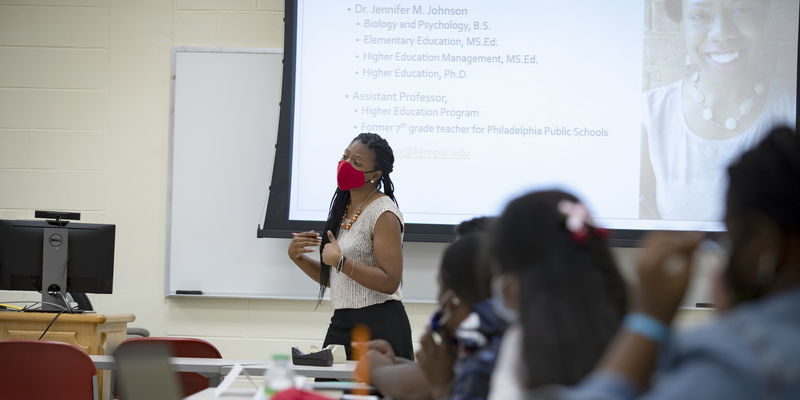A new faculty teaching program strengthens equity and inclusion in the classroom
Assistant Vice Provost of the Center for Advancement of Teaching Stephanie Fiore discusses the creation of the Teaching for Equity Institute.

It is back-to-school time as many Temple University faculty, staff and students, both new and old, return to in-person activities on Main Campus for the first time since the start of the COVID-19 pandemic in March 2020.
In conjunction with the return to campus, Stephanie Fiore, assistant vice provost of the Center for Advancement of Teaching (CAT), has renewed her commitment to supporting diversity, equity and inclusion at Temple by developing a new program: the Teaching for Equity Institute.
The institute’s mission is to foster knowledge, attitudes and skills among faculty that lead to equitable teaching practices and learning environments.
“We feel that the idea of diversity, equity and inclusion should be a core value in higher education. So, we are exploring ways we can create learning opportunities for the very diverse group of students that we have here at Temple,” said Fiore.
According to Fiore, it is essential to take a holistic approach by having conversations about teaching and how to serve students in the classroom—not only at Temple but across the national landscape—to create more opportunities for all students.
“There is a very broad and intersectional view of diversity—from race and gender to ability, sexual orientation, learning experiences and backgrounds, like first generation students, for instance—that we see in our classrooms,” said Fiore. “Our students are all great assets to our classrooms because they bring such different experiences. But they also bring a diverse set of needs and interests, so we need to meet them there as faculty to think about what we can do in the classroom that can really help them to reach their goals.”
The first faculty cohort of the Teaching for Equity Institute will meet for three hours on Tuesdays during a four-week period from mid-October to early November. They will discuss which specific teaching practices might benefit more students across disciplines and how to create an environment where students feel they belong, among other topics.
Fiore added that the program will encourage instructors to think about who they are and what they bring to the classroom, as well as the methods they can employ to support student learning that draw upon Universal Design for Learning, culturally responsive pedagogies, research on motivation and affective factors that impact learning, and ways educational technology can be implemented to promote equity.
Together with Fiore, the program’s planning committee involves five faculty developers from CAT, including: Naomie Nyanungo, director of educational technology; Linda Hasunuma, assistant director; Jeff Rients Sr., assistant director; Cliff Rouder, pedagogy and design specialist; and Elizabeth White Vidarte, faculty fellow.
Fiore sees her role as one of advocating for and facilitating excellence in teaching by supporting faculty in implementing evidence-based teaching practices. She is inspired when faculty tell her that new strategies in designing a course that they learned from CAT have helped their students.
“I am also inspired when teachers feel like they have the tools at their disposal that can help them continue to grow and work toward social justice in their classrooms by creating more equitable environments,” she added.
Her hope is for the Teaching for Equity Institute to eventually conduct research to measure its impact.
Next spring, the Teaching for Equity Institute will be offered again for faculty and there are plans to offer it a number of times throughout 2022.


